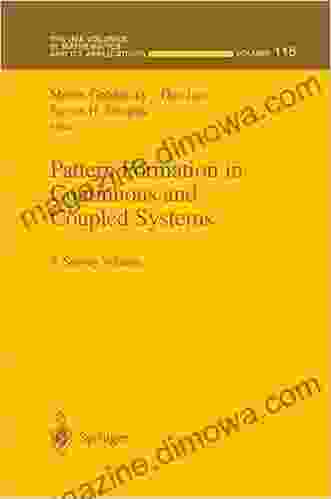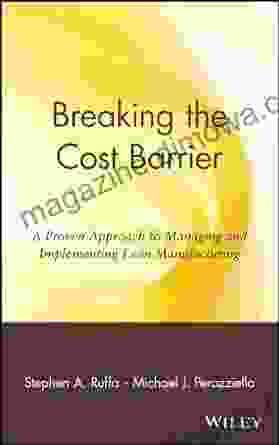Pattern Formation in Continuous and Coupled Systems: Unraveling the Dynamics of Complex Systems

From the mesmerizing spirals on seashells to the intricate honeycomb structures of beehives, nature is rife with captivating patterns. Pattern formation, the spontaneous emergence of Free Downloaded structures from initially homogeneous conditions, is a ubiquitous phenomenon in both natural and engineered systems. Understanding the mechanisms underlying these complex patterns has captivated scientists and researchers for centuries.
Pattern formation in continuous systems, such as liquids and gases, often involves the interplay of diffusion, reaction, and advection. Diffusion, the movement of particles from areas of high concentration to low concentration, tends to smooth out spatial variations. Reaction, on the other hand, can either create or annihilate particles, introducing localized variations in concentration. Advection, the movement of particles by external forces, can transport and deform patterns.
An iconic example of pattern formation in continuous systems is the Turing pattern. Proposed by Alan Turing in 1952, Turing patterns arise from the interaction of two morphogens, chemical messengers that regulate the development of biological organisms. In a Turing system, one morphogen inhibits the production of the other, while the second morphogen inhibits the production of the first. This intricate interplay creates a self-organizing system where patterns emerge spontaneously.
4.5 out of 5
| Language | : | English |
| File size | : | 6035 KB |
| Text-to-Speech | : | Enabled |
| Screen Reader | : | Supported |
| Print length | : | 339 pages |
| X-Ray for textbooks | : | Enabled |
Coupled systems consist of multiple subsystems that interact with each other. Pattern formation in coupled systems can be particularly intriguing due to the emergence of synchronization and entrainment phenomena.
Synchronization occurs when two or more subsystems oscillate with the same frequency and phase. For example, the synchronized flashing of fireflies is a captivating example of synchronization in biological systems. In engineered systems, synchronized oscillations are crucial for applications such as clocks, lasers, and communication networks.
Entrainment, on the other hand, occurs when a subsystem's oscillation is influenced by an external periodic force. A classic example of entrainment is the mesmerizing pendulum clock, where the swinging of the pendulum entrains the ticking of the gears. In biological systems, entrainment plays a vital role in regulating circadian rhythms and other periodic processes.
Pattern formation has far-reaching applications in diverse fields, including:
- Biology: Understanding the intricate patterns in embryonic development, animal coat markings, and plant phyllotaxis.
- Chemistry: Engineering materials with controlled porosity, self-assembly of molecules, and catalysis in structured environments.
- Engineering: Designing smart materials that respond to external stimuli, developing metamaterials with novel optical properties, and optimizing energy harvesting systems.
For instance, by mimicking the self-organization observed in nature, researchers have developed biomimetic materials that can self-heal, change their properties in response to stimuli, and mimic the structural complexity of biological tissues.
The recent release of "Pattern Formation in Continuous and Coupled Systems" provides an in-depth exploration of these fascinating phenomena. Authored by leading experts in the field, this comprehensive text delves into the fundamental principles of pattern formation, covering:
- Historical perspectives and conceptual foundations of pattern formation in various systems.
- Mathematical modeling and analytical techniques used to understand and predict pattern dynamics.
- Recent advancements and ongoing research frontiers in the study of pattern formation.
With its exceptional clarity, illustrative examples, and extensive references, "Pattern Formation in Continuous and Coupled Systems" serves as an indispensable resource for researchers, students, and practitioners interested in this captivating area of science and engineering.
Pattern formation is a captivating and multifaceted field that offers insights into the fundamental properties of nature and the creation of novel materials and technologies. Through "Pattern Formation in Continuous and Coupled Systems," readers will unravel the intricacies of this phenomenon, gaining a profound understanding of the Free Downloaded structures that shape our world.
4.5 out of 5
| Language | : | English |
| File size | : | 6035 KB |
| Text-to-Speech | : | Enabled |
| Screen Reader | : | Supported |
| Print length | : | 339 pages |
| X-Ray for textbooks | : | Enabled |
Do you want to contribute by writing guest posts on this blog?
Please contact us and send us a resume of previous articles that you have written.
 Book
Book Novel
Novel Page
Page Chapter
Chapter Text
Text Story
Story Genre
Genre Reader
Reader Library
Library Paperback
Paperback E-book
E-book Magazine
Magazine Newspaper
Newspaper Paragraph
Paragraph Sentence
Sentence Bookmark
Bookmark Shelf
Shelf Glossary
Glossary Bibliography
Bibliography Foreword
Foreword Preface
Preface Synopsis
Synopsis Annotation
Annotation Footnote
Footnote Manuscript
Manuscript Scroll
Scroll Codex
Codex Tome
Tome Bestseller
Bestseller Classics
Classics Library card
Library card Narrative
Narrative Biography
Biography Autobiography
Autobiography Memoir
Memoir Reference
Reference Encyclopedia
Encyclopedia Steven Cha
Steven Cha Tracy Holczer
Tracy Holczer Jodi Kendall
Jodi Kendall John Mckenna
John Mckenna Peter Wacht
Peter Wacht John Habberton
John Habberton Joe Head
Joe Head Marc Martin
Marc Martin Karen King
Karen King Tom Morton Smith
Tom Morton Smith Joe Calzaghe
Joe Calzaghe Lillian Luterman
Lillian Luterman Peter Neill
Peter Neill Jodi Bigelow
Jodi Bigelow Peter Chapman
Peter Chapman Philipp Schubert
Philipp Schubert Joan Horvath
Joan Horvath John Galt
John Galt John H Martin
John H Martin John Allen Paulos
John Allen Paulos
Light bulbAdvertise smarter! Our strategic ad space ensures maximum exposure. Reserve your spot today!

 Harry HayesDive into the Labyrinthine Maze of Time with "Throwback: The Chaos Loop" by...
Harry HayesDive into the Labyrinthine Maze of Time with "Throwback: The Chaos Loop" by... James JoyceFollow ·6.4k
James JoyceFollow ·6.4k D'Angelo CarterFollow ·10.2k
D'Angelo CarterFollow ·10.2k Haruki MurakamiFollow ·7.1k
Haruki MurakamiFollow ·7.1k Quincy WardFollow ·13.8k
Quincy WardFollow ·13.8k Demetrius CarterFollow ·6.3k
Demetrius CarterFollow ·6.3k Eddie BellFollow ·10k
Eddie BellFollow ·10k Derek BellFollow ·5.5k
Derek BellFollow ·5.5k Clarence BrooksFollow ·17.9k
Clarence BrooksFollow ·17.9k

 Joshua Reed
Joshua ReedTake Your Marketing Business Into The Next Level
Are you ready to...

 Aaron Brooks
Aaron BrooksFrom Fourier to Cauchy-Riemann: Geometry Cornerstones
From Fourier to Cauchy-Riemann: Geometry...

 Orson Scott Card
Orson Scott CardUnveiling the Art of Mitigation Banking: A Comprehensive...
In the intricate dance between...

 Victor Hugo
Victor HugoUnleash Your Creativity: A Journey Through the Enchanting...
Prepare to be captivated as we...

 Duncan Cox
Duncan CoxLoad of Bull: An Englishman's Adventures in Madrid
By Simon Bunce ...
4.5 out of 5
| Language | : | English |
| File size | : | 6035 KB |
| Text-to-Speech | : | Enabled |
| Screen Reader | : | Supported |
| Print length | : | 339 pages |
| X-Ray for textbooks | : | Enabled |












